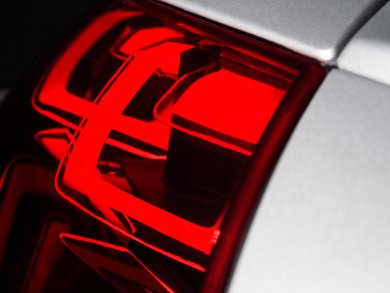Large-area, three-dimensional organic light-emitting diodes (OLEDs) have been produced by a consortium led by Philips, Aachen, Germany. They can be used in the rear lighting of an automobile. Other partners of the consortium are Audi, Ingolstadt, Automotive Lighting, Reutlingen, Merck, Darmstadt, and the University of Cologne, all Germany. The OLED 3D research project received around € 5.7 million in funding from the German Federal Ministry of Education and Research (BMBF).
The Technical University of Darmstadt and Merck developed new, crosslinkable red OLED materials. These allow production in multiple layers on formed glass using wet chemistry. The University of Cologne conducted intensive research on this manufacturing process and demonstrated it on 3D samples.
The quality of the OLED substances significantly impacts the lifetime and performance of OLED applications. The sensitivity and precision of analytical chemistry as well as expertise in producing ultrapure materials are thus indispensable preconditions for the successful application of this technology.
The 3D OLEDs used in the rear lights of the Audi TT were produced by Philips. The OLED manufacturing process, which was previously based on 2D glass substrates, had to be adapted to the third dimension. This effected the processes and technologies for manufacturing the glass substrates, the vacuum-based OLED coating, encapsulation, and electrical contacting.
Picture: © Audi
- Merck KGaA, Darmstadt, Germany




